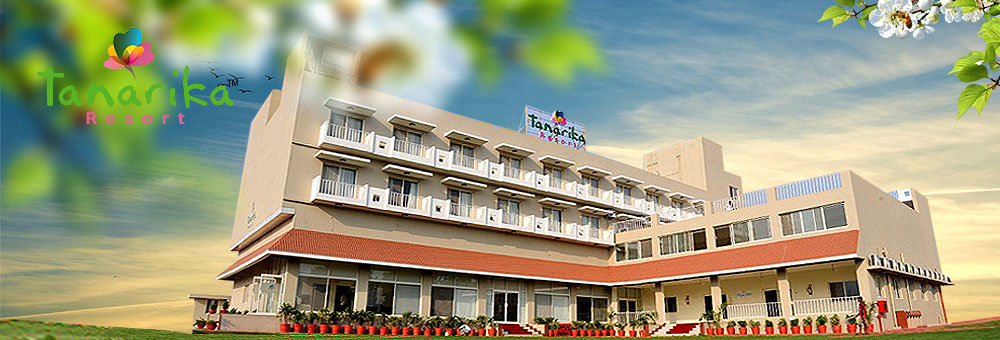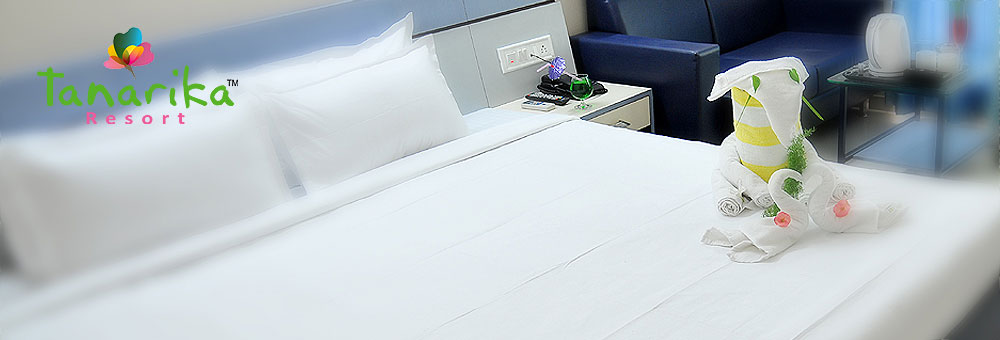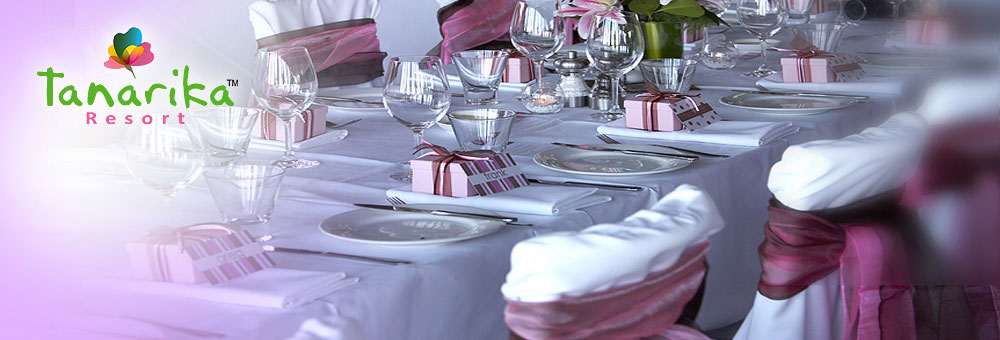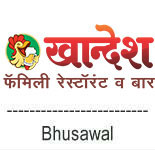






|
|||||
|
|||||
|
Welcome To The World Of Tanarika Resort... Ellora Caves are twenty eight kilometers (18 miles) from Aurangabad. The road passes by the base of the Daultabad fort. The cave Temples of Ellora, are the product of three religious systems-Buddhism, Brahmanism, and Jainism containing elaborate carvings of gods and goddesses and remarkable memorials of the three great faiths they represent. Each system had its individual style of architecture and Ellora presents the varied styles side by side. The sculptural work, too, reveals the points of contrast. The excavations on a sloping hill-side are spread over an area, from north to south, of about two kilometers. Caves 1 to 12, making the southern series, are Buddhist. The next sixteen belong to Brahmanism, caves 30 to 34 are in the Jain group. The Buddhist caves are the earliest (500-700 A.D.). The taxi-parking ground faces cave 16; in the Brahman series and visitors are apt to make this their starting point. However, it is advisable to walk down south, begin with Cave 1. And proceed in the right sequence. Having seen the southern and the middle series, it is best to return to the taxi and take it one and half kilometers up the road to another part of the hillside where the Jain Caves are situated. Those caves which may well be ignored have been omitted from this account. Among the most notable ones are Cave 5, 10, 15, 16, 21, 29, and 32. Buddhist ExcavationsBuddhist Cave 1 is possibly the earliest excavation at Ellora. It is a plain vihara with eight cells. Buddhist Cave 2 which look like a chaitya-hall has twelve massive columns with cushion capitals to support the roof. The lion-throne that holds the huge Buddha image is a symbol of the royal state, denoting a changed attitude in the great ascetic’s presentation. The galleries, however, have Buddha figures seated on lotus in the traditional posture of a preacher. There are several Bodhisattvas. Buddhist Cave 3 is not unlike the preceding one and has a chapel at the portico’s end. The lotus on which Buddha is seated is supported by Naga figures with snake-heads. Buddhist Cave 5 the largest in this series, is viahra, 35.66 meter by 17 meters (117 ft. by 56ft.), and has in addition two side recesses. Twenty four pillars hold roof. The interior seems to indicate that it was used either as a room for guest or as a classroom for novitiates. There is the usual Buddha image in a chapel. Buddhist Cave 6 is mainly notable for its ante-chamber which has several interesting sculptures. These include figures from Buddhist folklore. An unexpected innovating is the figure of the Hindu goddess of learning, Saraswati – well-known In India today in the same representation. Buddhist Cave 10 is the only proper chaitya-hall at Ellora, has the semblance of masonry work. A porch surmounted by a gallery inside the chapel. The carved roof, again, brings to mind the timber construction of the time. Above the pillars there are figures in base-relief. This is figures in base-relief. This cave temple is dedicated to Viswarkarma, the architect of the gods and the patron saint of many Indian artisans even today, but having no connection with the Buddhist pantheon. This commingling of concepts, which the Mahayana system initiated, resulted finally in the absorption of Buddhism in the current of Hindu thought and its virtual extinction in the land of its birth, A staircase leads to a large pillared court and to a gallery with a railed terrace. Buddhist Caves 11 and 12 are by far the most important in this group. They are large; three stories structures alike in design and represent the peak of the earlier style at Ellora. Cave 12 is the biggest of two and more impressive, known as Teen Thal, it is faced by an open façade, nearly 15.24 meters (50 ft.) high, plain in austre-looking, has porches supported by pillars in each story. The ground or first story is 35 meters by 13.10 meters (115 ft. by 43 ft.). Three rows of pillars divide it into aisles. The large hall in the second storey 35 meter by 21.33 meter and 3.65 meter (115 ft. by 70 ft.) and 12 ft. high is divided likewise by forty square pillars into five aisles. The interiors make a striking contrast to the undecorated façade, for the hall in each floor has galleries. Among the huge Buddha figures, the one in the shrine, arms folded and the face deeply meditative, commands attention.
Brahman ExcavationsThe Brahmanical series, excavated between the seventh and ninth centuries are glimpses of a world apart from the chaitya-halls and viharas. The familiar Buddha’s and Bodhisattvas are gone. The motifs are still as religious as in Buddhist art, but the representations take other forms. The Brahman religion in India was based at the outset on the concept of one Supreme Being. But in later ages, the “life-force” found dramatic expression in symbolical figures and the offshoot was a great Hindu pantheon around which grew a vast, richness of mythology. The imagination and poetry of the new concepts was reflected in art which attained a new visual grace and power. It is good to remember that the Brahman revival which produced this group of Ellora Caves under royal patronage had nothing in it of intolerance against the Buddhist system fought entirely in the intellectual arena. “The dharma (sacred duty) of a Hindu king as defender of the faith was to give protection to all religious devotees, are few of them failed in their duty in this respect. It would have been a flagrant outrage upon the Indo-Aryan sense of royal justice for king to attempt to controvert any form of religious argument except by the weapon of logic used in the debating hall”. Brahmanical Cave 14 serves as an introduction to the new order. In the first panel to the left there in Durga the mother goddess, whose worship forms a great national festival in India. The third plan panel has Vishnu, one of the Hindu triad (Creator, preserver, and Destroyer). The shrine holds the goddess of wealth, lakshmi, who is the wife of Lord Vishnu. The right wall is dedicated to Lord Shiva and several goddesses, among who is Lord Shiva’s wife, Parvati, who will be frequently seen in the other caves. Brahmanical Cave 15 is reached after a long climb over steps which lead to a carved gate. Double-stored, it has a courtyard with several small shrines and chambers for the residence of the temple priests. There is little to see in the spacious hall of the ground floor. In the upper hall, the vestibules on two walls contain reliefs carved with great delicacy. The Archaeological Department has given name-plates to these panels. Notable among them are several depictions of Shiva – eight-armed, warlike, slaying a demon; dancing the tandava, dance of destruction; in a homely mood, playing dice with Parvati; rising out of his symbolical representation, the lingam: destroying Tripura, the terrible demon-king who challenged the might of the gods and tried to take Heaven by assault. The shrine holds the presiding deity of the temple the lingam, and facing it in the centre passage is the Bull (Nandi), who is Lord Shiva’s mount and an inevitable feature in all Shiva Shrines. Brahmanical Cave 16 celebrated as the Kailasha. Shiva’s mountain abone, is by far best of all Ellora excavation and it is one of India’s most famous monuments. Here is rock cut architecture at the apex of technical skill of eighth and early ninth centuries. Regarded as the greatest monolithically structure in the world. Kailash combines immensity with grace, energy and superb genius. Its conception and planning are matched by the jewel-like execution. Hundred of architects and sculptures created this grandeur out of living rock in an inspired period of the country’s art history. “It is estimated that the task of quarrying its 3,000,000 cubic feet of rock must have occupied at least one hundred years”. As one of the earliest European visitor’s remark, “it is a wonder to see so great a mass in the air which seems so splendidly under-dropped that one could hardly forbear to shudder on first entering it”. There is no nobler achievement of Indian architects and sculptors, and no greater marvel of Indian sculpture. This and the superb sculptures of Elephanta Caves (in Bombay) which register the consummation of the same style are the offerings of the Rashrakutas, who succeeded the Chalukyas in Western Deccan in 753 A.D. The Kailasha Temple itself was constructed by king Krishna 1, of the Rastrakut dynasty in 760 A.D. The work began at the chiff top. A rectangular trench was cut downward into the rock depths. Some three million cubic feet of rock seem to have been chiseled out so that a great pit was formed, 31.61 meter deep, 31.12 meter long, and 46.92 meter wide (107 ft. deep, 276 ft. long, and 154 ft. wide). The enormous block left at the centre was then chiseled through decades of time in the familiar shape of a Shiva temple, as complete in detail as the brick and mortar structures. It was double-storied, 45.72 meter by 30.48 meter (150 ft. by 100 ft.) at its base, was several ancillary features added later. While the temple grew out of the shaping of the great mass of monolith detached from the ridge by the scooped area around, the sculptors were busy simultaneously, adding profuse ornamentation, achieving a wonderful composition, the entire architecture is, infant, a gigantic sculptural piece. The spacious court has three buildings connected by an overhead bridge. The main temple has a 76.20 meter (25 ft.) high plinth, the sides of which are done into bold friezes of life-size elephants. The huge beasts seem as train with the great burden of the temple on their backs. The roof is pyramidal having a three-tier tower and projection gable-front. There is a cupola on top. From the outer court’s extreme right-hand corner, there is a cupola on top. From the outer court’s extreme right-hand corner, a panoramic view of the edifice brings out the main outline. The northern court is featured by a huge elephant which has lost its truck, and also a victory Pillar. Further up, a gallery of twelve panel’s offers plastic rends rings of Shiva legends. Most of them depict the god with Parvati. The panels that continue in the eastern gallery reveal the god in other attitudes. The adjoining wall makes the southern gallery. Here, Vishnu provides a variation. He is, for instance, seen in the Man-lion incarnation (Narsinghavtar) tearing with his claws the body of a demon king. The demon king was blessed with a boon from the creator which made him invulnerable to any one in human or animal form. Drunk with power, with none to challenge his might for the gods also were human in their image, he became an intolerable tyrant. Vishnu solved the problem of his destruction by attacking him in the form of a man-lion, neither human nor animal. Close to this gallery is a sculpture masterpiece known as “Ravan shaking Kailasha”. Ravana, a central figure in the great epic Ramayana, stepped under Kailasha and tried to lift the mountain abode on his head as an exhibition of his great strength. By way of an answer, Shiva simply put his foot down on the floor and under the enormous pressure exerted, Ravana become helpless trapped. The depiction shows Parvati clinging to her husband, an alarmed maid in flight, and attendants seated unperturbed with full faith in the lord of kailasha. Several other halls conations work of considerable value contributing to the total effect. The main hall on the first floor has well-decorated balconies. A central door leads to the shrine containing the great lingam. The temple is faced by a pavilion, 15.24 meter (50 ft.) high and level with the main structure to which it is connected. This pavilion, 6.09 meter (20 ft.) square: is the abode of Nandi. On each side of the Nandi shrine is a pillar, a stone and a “flagstaff” about 15.54 meters (51 ft.) high with finely wrought carvings of Shiva Cult. These two pillars are among the best work of art in Kailasha. The only other temples of interest in this Brahmanical series are Caves 21 and 29. Brahmanical Cave 17, the pillars of this cave huge and in the interior Garbh Greh, there is Shiv Ling and the images of Brahmma, Visnu, Ganesh and Mahisha Surmardni. Brahmanical Cave 18, there are four pillars and Shiv Ling in the interiour Garbh Greh. Brahmanical Cave 19, this cave contains Shi Ling in the Garbh Greh. Brahmanical Cave 22, the local name is Neel Kanth and is a river. Brahmanical Cave 23 and 24 are only Garbh Grehs. Brahmanical Cave 25, this is a huge cave and interior contains a standings image of sun god in Rath (Chariot), which contains seven horses. The chariot is being driven by Arun and Usha and Pratusha are adorned with bows (Dhanush Bans). Brahmanical Cave 26, this is a copy of cave 21.
Brahmanical Cave 28, there is an empty small room in this cave and the water fall runs only for six-seven months. Brahmanical Cave 29 is a massive structure, 45.72 meter wide and 5.48 meter high (150 ft. and 18 ft. respectively). It has a group of halls built in the form of cross. Unlike the other Ellora temples it has three separate entrances, with wide columns, and a pair of stone lions crouching near the fight of steps – lions guards the entrance of many Hindu temples. Everything here is colossal. The verandah near the entrance is dominated by huge Shiva with eight arms. It is a powerful, depiction of the god conceived as the Terrible. Another colossal Shiva in the portico dances in destructive fury. A beautiful Yamuna, river goddess, waits outside.
Jain ExcavationsMore than a kilometer away at the northern spur of the ridge, there are the Jain excavations (30 to 34). Jainism was founded in the sixth century before Christ, at the same time as Buddhism; through its early beginnings go back a further few hundred years. It is still a living faith among certain section of people. These excavations belong to the period between the ninth and eleventh centuries. The visitors may confine his attention to caves 32 and 34 only. Jain Cave 30: this cave being like the cave No. 16 is called ‘Chota Kailash’. Pillars and ceilings are adorned with carved lotus flowers. There are images around the image of Lord Mahavira. Jain Cave 32 is known as Indra Sabha, Assembly Hall of Indra, the king of gods. The entrance has a stone elephant and a 9, 14 meter (30 ft.) column reminiscent of Kailasha. Close by is a decorative shrine, its ceiling carved into the symbolic lotus. This has a figure of Mahavira, the “founder” of the Faith. Mahavira who however, was only the twenty fourth and last of the saints (tirthnkaras) in Jain religions lore. Of these, the twenty third on the list, Parasnath, seems to have been the first historical personage – he lived probably over 700 years before the birth of the Christ. He is seen in the chamber at the left, guarded by the serpent king, in a familiar grouping of male and female attendants. In this chamber, Mahavira is seated on a lion throne. A great Jain saint is engaged in hard penance, oblivious of his surroundings. The upper-storey has a verandah and a big hall with decorative pillars. It may be noted that while Jain images have a peculiar heaviness, the pillars and walls of the caves carry ornamental work of great delicacy, almost like the carving on ivory. “No other temple at Ellora is so complete in its arrangement or as finished in its workmanship as the upper-storey of the Indra-Sabha”. Jain Cave 34 is best reached from Indra Sabha by a communicating passage with rock-hewn door at the left of the western shrine. It has of course, a separate entrance as well, with a finely carved arch. The figures are again of the Jain saints and their attendant. Some of the best examples of Jain sculpture are to be seen here in the decorated pillars and recesses in the walls. Each Tuesday Ellora caves remain close and entry fees is Rs. 10/- per person for Indians and US$ 10 for foreign tourist. |
|||||
|
|||||
A Finest Hotel Chain In Bhusawal City, District: Jalgaon, State: Maharashtra, (India) |
|||||
|
© 2015 Tanarika Resort, Bhusawal. Website Designed & Developed By malhar.org | Unique Gifts Hotel near Ajanta Caves | Resort near Aurangabad | Hotel near Ellora Caves | Hotel near Jalgaon | Hotel near Shegaon |










